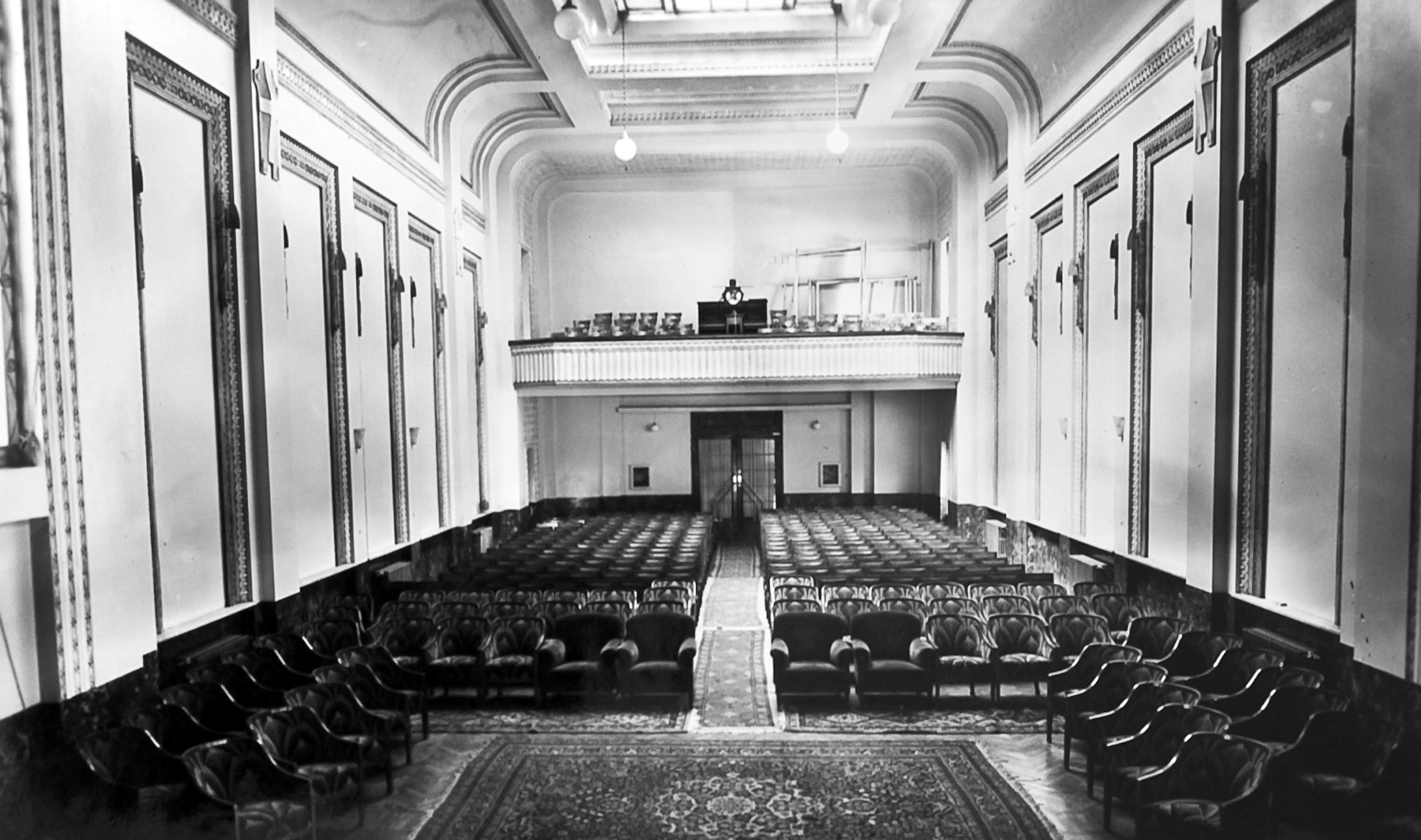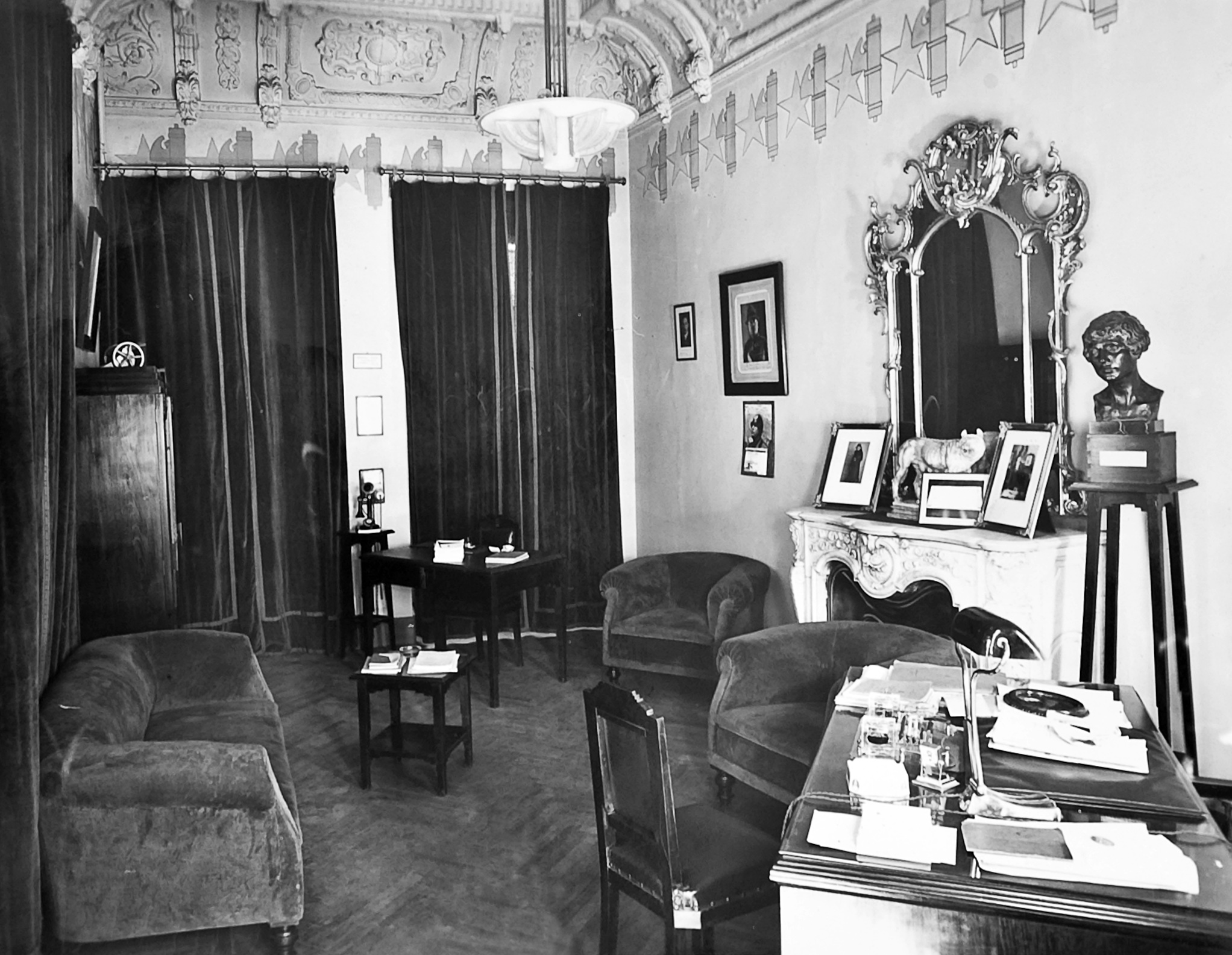The Renovation of Casa d’Italia, Tepebaşı

Casa d’Italia theatre hall, 1932, Aldo Campaner Archives.
As of 1919, the Italian government had begun to use the former Venetian Palace (Palazzo Venezia) and thus, the former Italian Embassy building (ex Ambasciata dei Campetti), which was taken back from the Austrians after World War I, was deserted and remained in a dilapidated condition. Originally designed by A. Breschi and A. Bottarlini, the said former embassy building in Tepebaşı, was to be renewed and reopened to function as a social space for the entire Italian community of the city to gather in. Additionally, a decision was also made to construct a theater hall with a capacity of 600 in the garden property behind the building. Consequently, Baron Orsini invited Marcello Campaner to supervise the construction and serve on the Casa d’Italia Commission, established in 1927.

Fascism Office (Ufficio del Fascio) in Casa d’Italia, 1932. Aldo Campaner Archives.
The Commission selected the project designed by De Nari and the firms of Bottinelli and De Cillia completed the construction. The main façade was modified with a new entrance door that would encompass both floors. A new attic floor with an iron construction was added to the building to accommodate the sports hall. This new floor was recessed from the existing original façade with a front terrace in order to minimize its visibility from the street. In accordance with the design of De Nari, the building took on a political character reflecting the propaganda of the Italian government’s ideology of the period, through the fascio-themed frescos and plaster molding decorations of bundle of axes and rods symbolizing the fascist government.
The Architect of Changing Times: Edoardo De Nari can be seen free of admissions until 20th April.